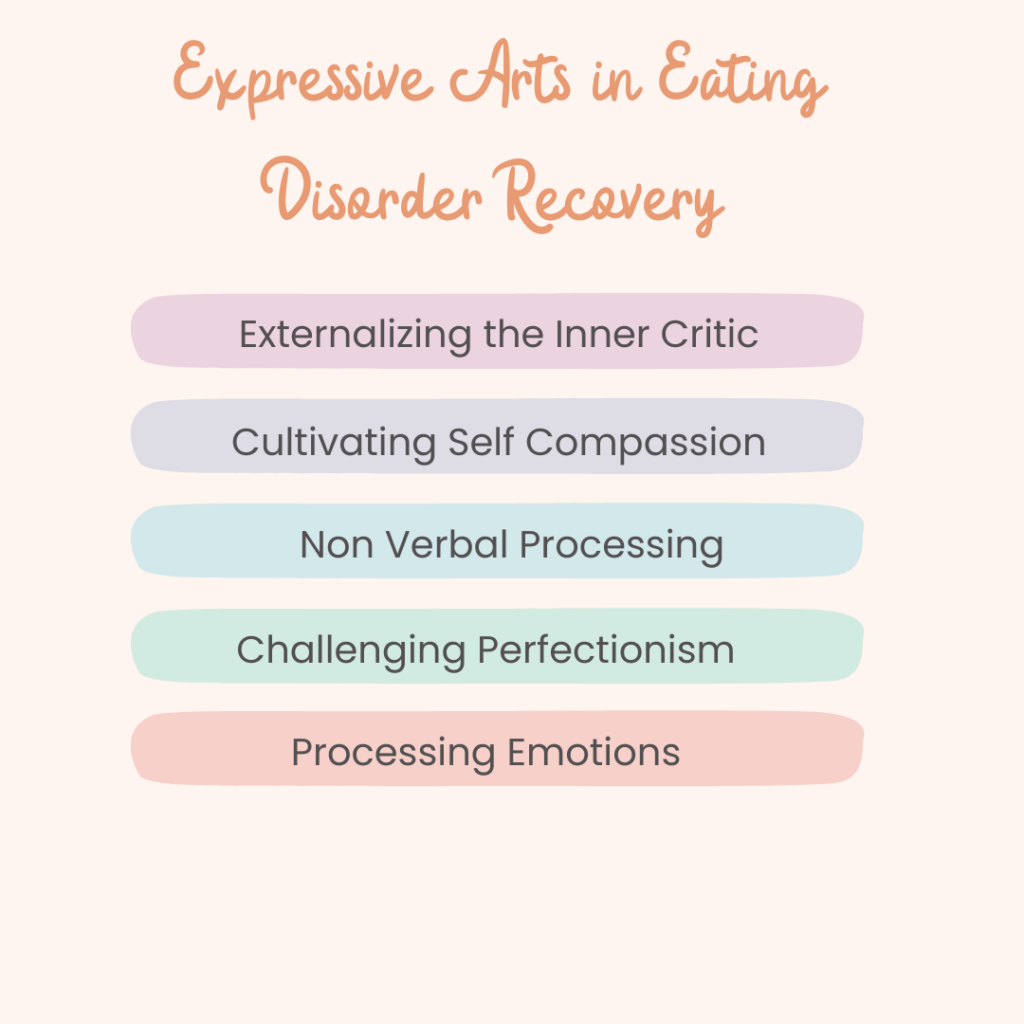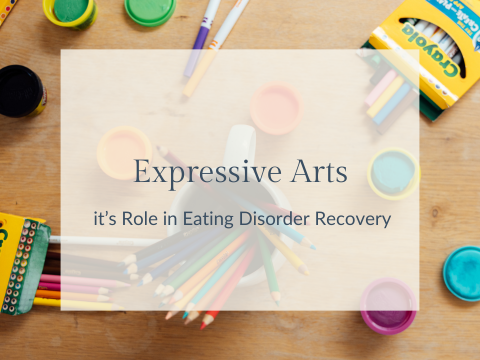Angela Prior
lcsw, ryt, ciec
hey there!
The AP blog is here for all things mental health, embodiment, yoga, and burnout. Poke around and take what you need.
meet angela
Role of Expressive Arts Therapy
June 21, 2025
In the journey of recovering from an eating disorder and developing a more compassionate relationship with your body, words can often feel not enough. The internal experiences, the intense emotions, and the deeply ingrained unhelpful beliefs about food and self-worth can be incredibly difficult to give a voice too. The relationship between wanting to shrink and not take up space that often can be present in this work asking someone to take up space with their voice can be a barrier that needs to be overcome. This is when additional experiential modalities can be helpful including Expressive Arts Therapy.

What Exactly is Expressive Arts Therapy?
The role of Expressive Arts Therapy is all about the process of creating. It is a unique therapeutic approach that integrates various art forms and mediums. Like painting, drawing, sculpture, music, dance, poetry, and drama to explore your inner world.
A core belief of expressive arts is that the act of creating can be a healing experience. Allowing you to use different tangible items to shape, color, image, and a voice to those that are more intangible such as emotions, beliefs, and memories.
Expressive arts allows you to :
- Express feelings safely: Give form and color to emotions that are too overwhelming or complex to name.
- Gain new perspectives: See your struggles from a different angle, fostering insight and understanding.
- Tap into your intuition: Connect with inner wisdom and strengths.
Perfectionism of any kind will be challenged during the expressive arts process. It is about making a mess, experimenting without judgment, and is supportive of mindfulness and staying in your present moment.
The Role of Expressive Arts in Eating Disorder Recovery
Eating Disorders can often manifest with a loud, critical voice that dictates thoughts and behaviors. Expressive Arts Therapy allows for the creation of a different pathway. A pathway that can turn turn down the volume on that voice. Giving you space to tap into your own authentic healthy self.
It does this through:
1. Externalizing the Inner Critic:
It can be helpful to give the eating disorder a physical form or a make is something separate from yourself. It allows you the opportunity to challenge the eating disorder and separate your identity from it.
2. Challenging Perfectionism:
Perfectionism is a common trait that is prevalent with eating disorders. Expressive arts allows for a more controlled environment to grow your distress tolerance with imperfection and reframing in real time.
3. Processing Emotions:
We all need ways to make our internal experiences external. For our emotions have a space to breath, move, and exist outside of ourselves. Expressive Arts can be a conduit for expressing emotions.
4. Cultivating Self Compassion:
Practice and building experiences where you get to connect with your emotions and self. Finding a compassionate voice free from inner criticism and centering around the eating disorder.
5. Non verbal processing:
Use different mediums to express an internal world without words. The eating disorders often thrive in shame and secrecy. This is a way to disrupt that pattern that may feel more safe or familiar vs using words.

Expressive Arts can be a powerful addition to your recovery and therapy work. That’s the beauty of many of the experiential therapy modalities. Integrate seamlessly with other therapy approaches such as cognitive behavioral therapy or more talk centered therapy models.

eight free meditations
To Support Your Mental Health
Let's Work Together
Meet Our Team of Therapists + Yoga Instructors